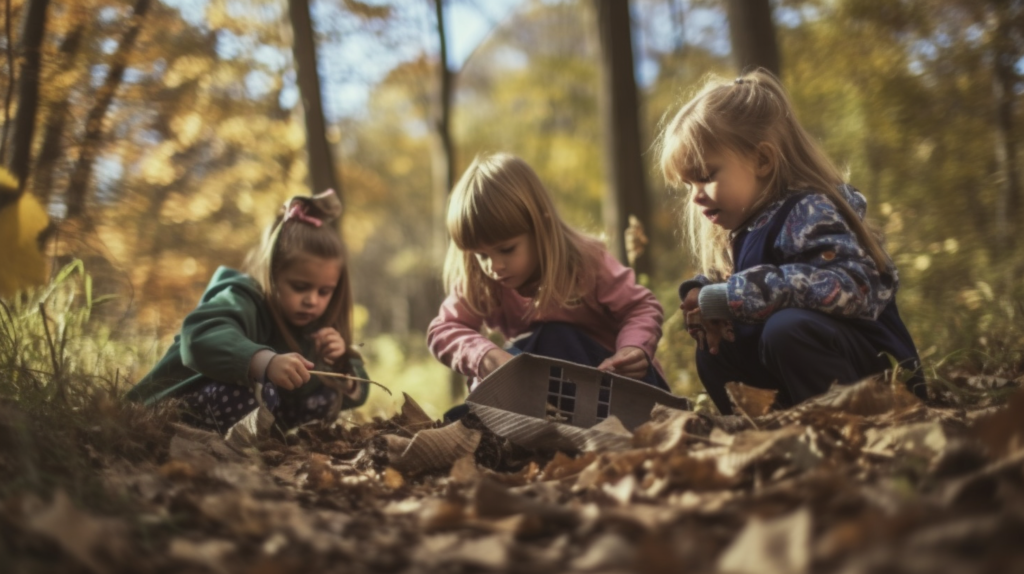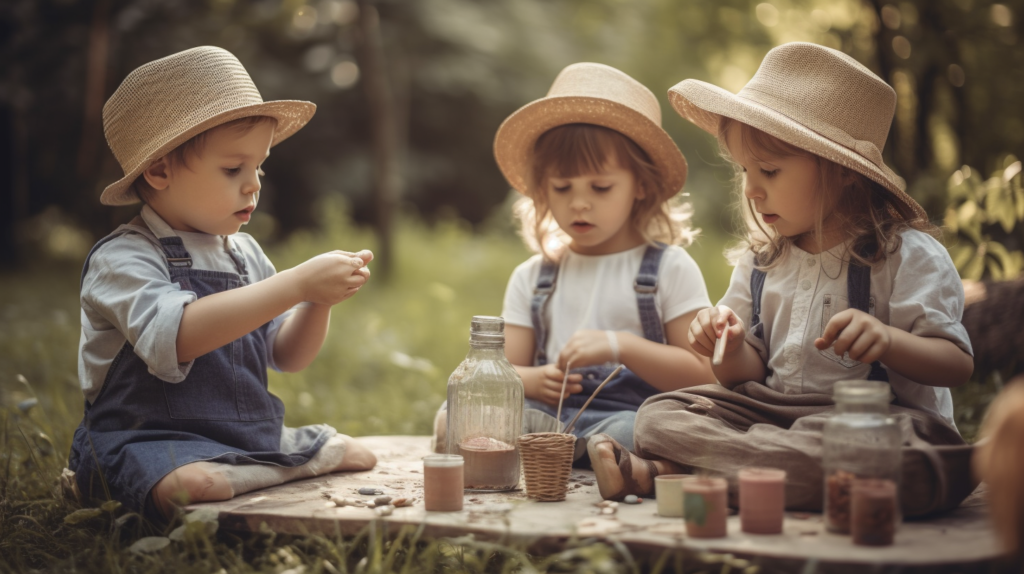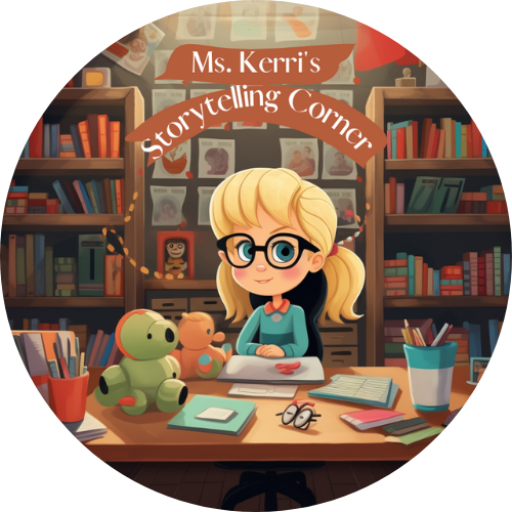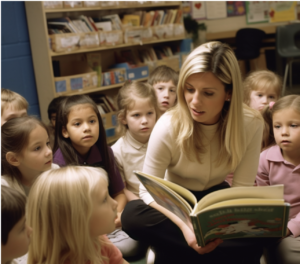Gardening is a wonderful way to introduce preschoolers to the joys of nature and outdoor activities. In this article, we will explore how to engage little green thumbs in gardening and outdoor exploration. From choosing the right plants to engaging in fun outdoor activities, there are plenty of opportunities for preschoolers to learn, play, and connect with nature.
Key Takeaways
- Gardening provides valuable sensory experiences for preschoolers.
- Engaging in outdoor activities fosters a love for nature and the environment.
- Safety precautions are essential when gardening with preschoolers.
- Nature scavenger hunts encourage curiosity and exploration.
- Gardening promotes storytelling and imaginative play in outdoor settings.
Exploring Nature with Little Green Thumbs

Choosing the Right Plants
When introducing preschoolers to gardening, choosing the right plants is crucial. It’s not just about what grows well in your garden but also about what captures the imagination and interest of young minds. Easy-to-grow plants that yield quick results can keep their attention and encourage a love for gardening.
Sunflowers, with their towering height and bright flowers, are a perfect choice. They can teach children about the sun’s movement as they tend to turn and follow the light. Other great options include cherry tomatoes, snap peas, and marigolds, which offer a mix of engaging colors, tastes, and textures.
- Sunflowers: Quick to sprout and fun to watch grow
- Cherry Tomatoes: Offers a sweet reward
- Snap Peas: Easy to pick and eat
- Marigolds: Bright and cheerful, repel garden pests

Remember, the goal is to make gardening a fun and educational experience. Choosing plants that are easy to care for and exciting to watch grow can help achieve this.
Creating a Sensory Garden
Creating a sensory garden for preschoolers is not just about planting flowers. It’s about engaging all their senses and fostering a deep connection with nature. A sensory garden can be a magical place for young children, filled with colors, textures, smells, and sounds that stimulate their curiosity and encourage exploration.
To start, consider including a variety of plants that offer different sensory experiences. Here’s a simple list to get you started:
- Fragrant flowers like lavender and jasmine to stimulate the sense of smell
- Textured plants such as lamb’s ear for touch
- Brightly colored flowers and foliage to delight the eyes
- Edible herbs and vegetables that are safe for tasting
Remember, the key to a successful sensory garden is diversity. The more variety you include, the richer the sensory experience for the children.
Safety is paramount. Ensure all plants are non-toxic and free from sharp edges. Incorporate elements like a sandbox for digging and logs for climbing to encourage active play, but always under supervision.
Gardening Safety for Preschoolers
Ensuring the safety of preschoolers in the garden is paramount. Proper attire is essential; lightweight, long-sleeved shirts and pants can protect sensitive skin from the sun and scratches. Additionally, gardening gloves can safeguard little hands from thorns and rough textures.
Always supervise children in the garden to prevent accidents.
Here are a few simple rules to follow:
- Apply SPF regularly and wear a hat.
- Have a water station to ensure children stay hydrated.
- Check the garden for hazardous plants and remove them.
By adhering to these guidelines, we can create a safe and enjoyable gardening experience for our young gardeners.
Engaging Outdoor Activities for Preschoolers

Nature Scavenger Hunt
A Nature Scavenger Hunt offers an exciting way for preschoolers to explore the outdoors while engaging their curiosity and observational skills. Creating a list of items for children to find can turn a simple walk into an adventure. This activity not only fosters a love for nature but also helps in developing their attention to detail.
Here’s a simple list to get started:
- Different types of leaves
- Stones of various shapes
- Feathers
- Pinecones
- Flowers of different colors
Remember, the goal is to make the scavenger hunt enjoyable and educational without turning it into a competition. Encouraging children to take their time and observe their finds closely can lead to unexpected discoveries and learning opportunities.
Planting and Watering Seeds
Planting and watering seeds is a magical experience for preschoolers, offering them a firsthand look at the cycle of life. This activity not only teaches patience and responsibility but also instills a sense of wonder in young minds.
When selecting seeds, opt for those that are large enough for small hands to handle easily, such as sunflower, pumpkin, or pea seeds.
Here’s a simple guide to get started:
- Let the children fill pots with soil.
- Place the seeds gently into the soil.
- Cover the seeds with a thin layer of soil.
- Water the seeds lightly, ensuring the soil is moist but not waterlogged.
Remember, the key to successful seed planting is consistency in care. Regular watering and observation will allow the children to witness the miracle of growth from a tiny seed to a thriving plant. Encouraging them to keep a simple diary of their observations can further enhance their learning experience.

Garden Storytelling Time
After a day filled with outdoor activities, Garden Storytelling Time offers a perfect opportunity to wind down and reflect. Gather the little ones in a circle and let their imaginations bloom with tales of magical gardens, talking flowers, and adventurous bugs. This is not only a moment for relaxation but also for sparking creativity and a love for nature.
Here are a few suggested themes to get started:
- The Secret Life of Plants
- Adventures of a Lost Seed
- The Garden at Night
Encouraging children to come up with their own stories can be a delightful way to end the day. It helps reinforce what they’ve learned about gardening and the natural world around them, making the experience both educational and enchanting.
Conclusion
In conclusion, gardening is a wonderful outdoor activity for preschoolers that provides hands-on learning, sensory exploration, and a connection to nature. Engaging in gardening activities can help children develop a love for the environment and foster a sense of responsibility. It’s a great way to encourage curiosity, creativity, and physical activity in young children while teaching them valuable life skills. So, grab your little green thumbs and start gardening with your preschoolers today!
Frequently Asked Questions
Is gardening safe for preschoolers?
Yes, with proper supervision and safety measures, gardening can be a safe and enjoyable activity for preschoolers.
What plants are suitable for preschoolers to grow?
Plants that are easy to care for and have sensory appeal, such as sunflowers, marigolds, and herbs, are great choices for preschoolers.
How can I ensure gardening safety for preschoolers?
Ensure that gardening tools are child-friendly, teach children about potential hazards, and supervise them closely during gardening activities.
What are the benefits of gardening for preschoolers?
Gardening helps preschoolers develop fine motor skills, learn about nature, and cultivate a sense of responsibility and patience.
How can I make gardening fun for preschoolers?
Incorporate sensory elements, storytelling, and interactive activities to make gardening a fun and engaging experience for preschoolers.
What outdoor activities can preschoolers enjoy in the garden?
Preschoolers can enjoy nature scavenger hunts, planting and watering seeds, and engaging in garden storytelling time for outdoor fun.


Ms. Kerri’s Corner provides a exciting virtual space for preschool learning. Through a variety of engaging activities, she exposes young minds to early math, literacy, science and social-emotional skills in a developmentally appropriate way. Centers for blocks, art, books and music allow children to explore hands-on learning at their own pace. Guided lessons subtly introduce number sense, letter sounds and narrative thinking. Careful observation gives insight into each child’s progress across domains. Viewers are also invited to participate, reinforcing that their ideas are valued. By making learning fun yet purposeful, Ms. Kerri lays the groundwork for future academic success while fostering creativity and imagination. Her program offers preschoolers valuable screen-based learning experiences.




